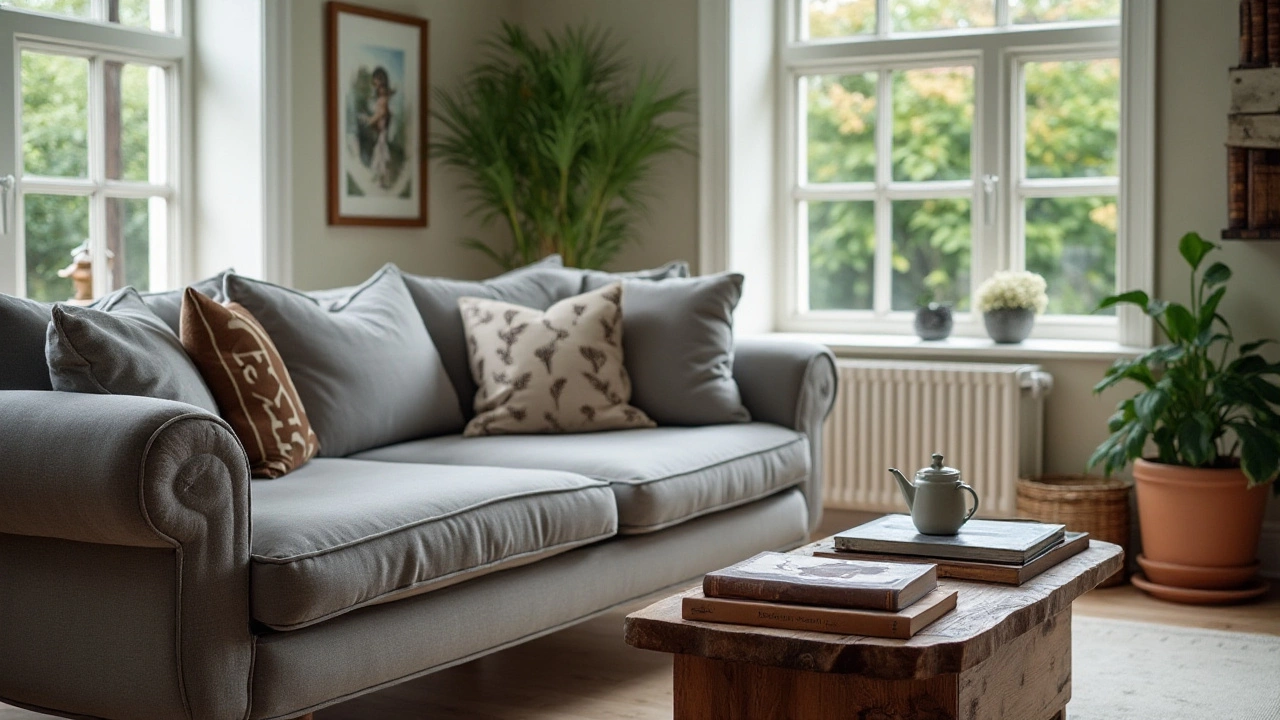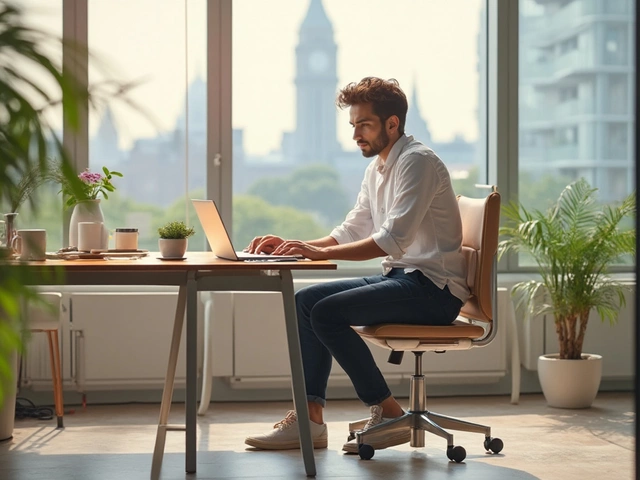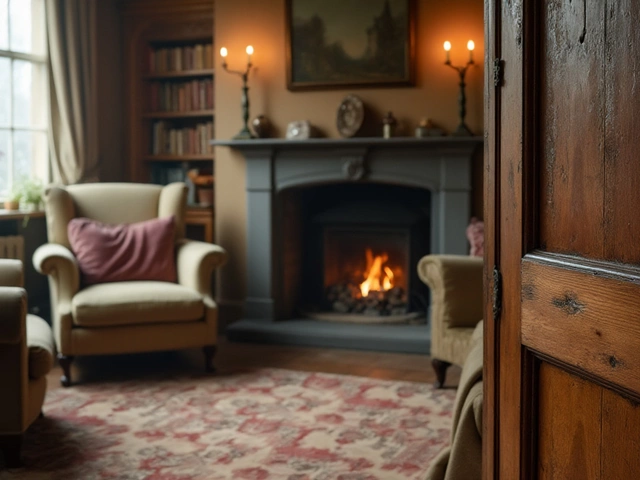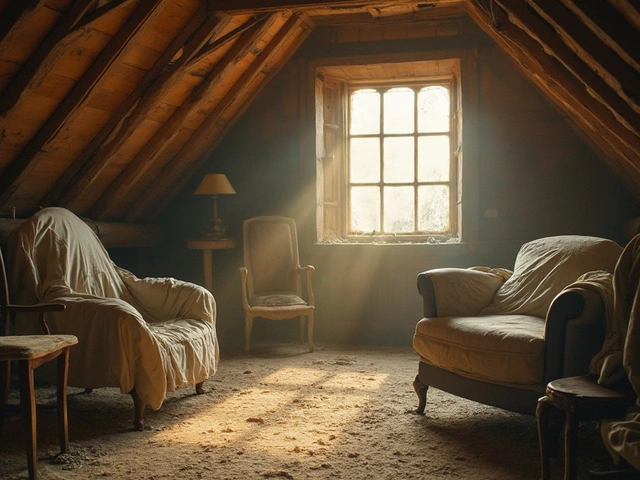When it comes to choosing a coffee table for your living room, getting the size just right is key. A coffee table that is too large can overwhelm your space, while one that's too small might look out of place or fail to serve its purpose adequately. The secret to a harmonious living room lies in the balance between your coffee table and your sofa.
Understanding the relationship between these two pivotal pieces of furniture can transform your space from awkward to aesthetically pleasing. Not only can the right size enhance visual appeal, but it can also improve the functionality and dynamics of your daily life in the living room. Whether you're sipping a morning brew or entertaining guests, the right coffee table height and width make all the difference.
- The Relationship Between Sofa and Coffee Table
- How to Measure the Perfect Size
- Practical Tips for Small Spaces
- Design Styles and Their Impact on Size Choice
The Relationship Between Sofa and Coffee Table
The dance between a coffee table and a sofa is pivotal to crafting a welcoming and functional living room atmosphere. This pairing dictates not only the flow of movement around the room but also the way space is visually consumed. When arranged correctly, the connection between these two items can offer a seamless transition across your living area, enhancing both ambiance and functionality. A well-chosen coffee table should complement the style and size of your sofa without overpowering or underwhelming its presence. So, where do you start? Generally, a coffee table height that's around 1 to 2 inches lower than the seat of the sofa provides the most comfort and utility. This will allow you and your guests to easily reach drinks or snacks without awkward stretching.
But sizes and proportions vary widely, and how do you establish that ideal balance? Staying proportional is key. The length of the coffee table should preferably measure about two-thirds the length of the sofa. This dimension ensures enough space for people to walk past without bumping their shins. When you consider the breathing room around your furniture, maintaining at least 16-18 inches between the sofa and the coffee table allows room to maneuver in comfort. Every element of your living room affects this balance, from the height of the armrests to the style of the sofa itself. Whether yours is a sprawling sectional or a compact loveseat, every sofa has a perfect coffee table waiting for it.
If we glance through the pages of interior design history, such proportion rules are timeless. As designer David Hicks once said,
"It's not simply about placing the biggest piece near the biggest space — you have to think about having balance, symmetry, and scale that feels easy on the eye.”The harmony set by an ideal sofa and coffee table union isn't simply a sidenote; it is a fundamental building block for both flow and aesthetics. Curating this tandem to resonate with your unique taste helps in crafting a signature stamp on your space, an undetectable but pervasive force that makes a room feel just right.
In some cases, the specifics of your room's layout may tip the scales in favor of a unique approach. For example, smaller spaces might benefit from a round coffee table that allows for smoother movement around tight corners. Similarly, for longer rooms, dual smaller coffee tables may provide the balance required without hogging precious floor space. Of course, your living room's key purposes determine much of what’s essential in the relationship between your coffee table and sofa. A family room, for instance, may demand more durability in your coffee table surfacing options, adding a layer of practicality to aesthetic choices.
While design trends ebb and flow, these spatial and functional truths remain steady. Recognizing the role these elements play in our practical and visual lives improves our living room’s usability. With attention to detail, your interior decor will mirror comfort and beauty through the simple coordination of two essential furniture pieces. This relationship, then, becomes not just a cornerstone of design but a celebration of form meeting function.
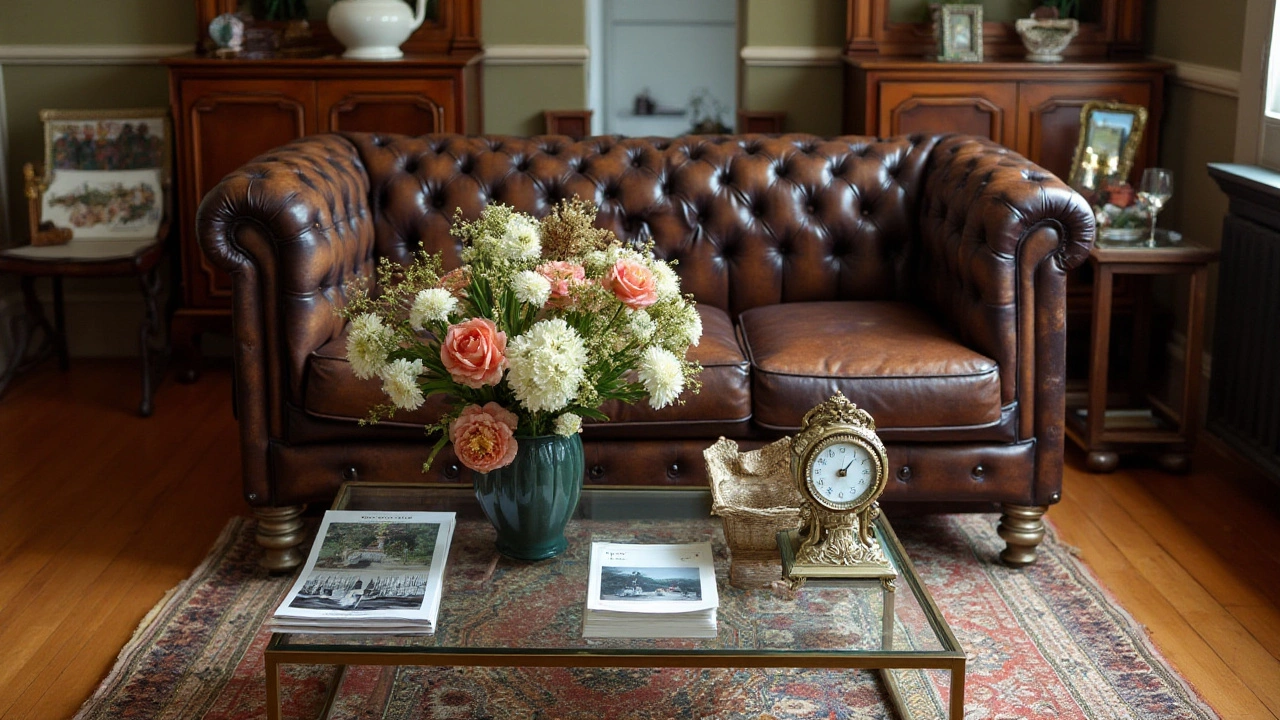
How to Measure the Perfect Size
Deciding on the ideal size for your coffee table involves more than just eyeballing the available space. The measurement process begins with understanding the dimensions and scale of your current sofa. Typically, a good rule of thumb is to choose a coffee table that is approximately two-thirds the length of your couch. This proportion ensures the table looks balanced against your sofa and fits naturally within your living space. When it comes to height, the coffee table should sit level with or slightly lower than the seat of the sofa, allowing easy access without obstructing your view or movement.
To get started with precise measurements, begin by measuring the length of your sofa. Using a tape measure, record the full length from arm to arm. Once you have that number, calculate two-thirds of that length to get an approximate target for your coffee table. For example, if your sofa is 90 inches long, aim for a coffee table around 60 inches in length. When it comes to the height, grab your tape measure again and check the distance from the ground to the top of the sofa's seat cushion. Your coffee table should typically be within one to two inches of this measurement to ensure optimal comfort and convenience in use.
The layout of the room itself also plays a significant role in determining the right size. Imagine this: your living room should have enough space to move around comfortably, with at least 14 to 18 inches of space between the edge of your sofa and the coffee table. This clearance allows for easy navigation and ensures the area does not feel cramped. It's not just about fitting the furniture but making sure the space remains functional and inviting. If your room is smaller, leaning towards a smaller table might help maintain a spacious feel, while larger rooms can handle more substantial options without feeling overwhelmed.
Richard Mishaan, a well-respected interior designer, once said,
"A coffee table is the anchor of your room's design, ensuring it complements and does not compete with the furniture.”This quote encapsulates the essence of choosing the correct size—where the coffee table should tie all the elements together harmoniously. Additionally, consider the functions you desire from the table. If storage is a priority, opting for tables with shelves or drawers can help keep the room tidy while still fitting the scale requirement.
Sometimes, it helps to draw a simple sketch or outline of your room, marking out where the furniture will be positioned. This visual aid can guide you in understanding the spatial dynamics and pinpoint where a coffee table would fit naturally. Think of your coffee table not just as a solitary piece, but an integral part of the room's ecosystem, one that interacts with both the sofa and the other design elements in the area.
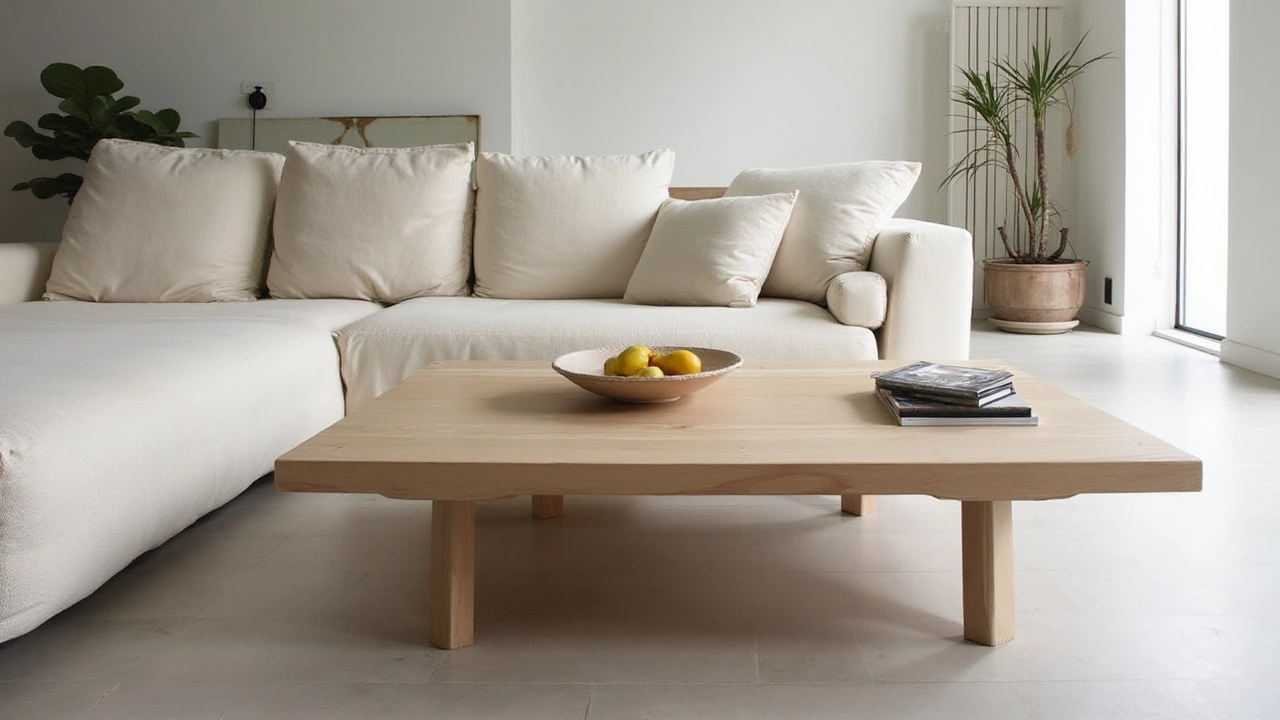
Practical Tips for Small Spaces
Living in a cozy apartment or a snug home can pose unique challenges when choosing the right coffee table. But don't fret; even in limited space, selecting the perfect coffee table size can be a breeze with the right approach. The first step is to thoroughly measure the area. Understanding the dimensions of the available space is crucial as it dictates not only the size but also the style of the table. Measurements should include the length and width of the space between the couch and any other furniture opposite to it. Always remember, a clearance of at least 18 inches around the table is ideal to ensure ease of movement and accessibility.
Opt for multipurpose furniture pieces. Coffee tables with built-in storage or ones that can be extended or folded when not in use can dramatically increase the real estate of your living room without occupying valuable floor space. A nested table set is another option, offering flexibility to unfold extra tables when needed and tuck them away to free space afterward. Consider choosing a coffee table with shelves or drawers, which can function both as a decorative surface and a storage unit. Keeping a space tidy is essential in small areas, and a well-chosen table can help maintain that order.
When it comes to style, transparency can be your friend in tight quarters. Glass-top coffee tables give an illusion of space by allowing light to pass through, reducing visual clutter in the room. Choosing a table with thin or elegantly simple legs can also help maintain a sense of openness, as opposed to chunky designs which may visually overpower the space. “A well-designed small space relies heavily on decor aspects that offer light and reflection,” notes designer Emily Henderson.
The right combination of transparency and reflection can trick your senses into experiencing more space than there actually is.Such transparency isn’t just visually appealing; it also ties back to understated elegance and minimalism, which are often guiding principles in decorating smaller spaces.
Smart Use of Colors and Materials
Another tip for maximizing small spaces is to consider the use of colors and materials of your coffee table. Light-colored wood or muted metal tones are preferred because they blend seamlessly with a variety of interiors without dominating the scene. The overall feeling should be airy and cohesive, ensuring your coffee table doesn't stick out while at the same time providing a functional gathering point. Texture also plays a significant role; a smooth, polished surface can add sophistication, while a rustic finish adds a touch of warmth and character, often helping smaller areas feel more lived-in and comfortable.Following these steps and tips can aid you immensely in choosing the perfect coffee table size for small living spaces. Remember, the goal is to enhance the space, both functionally and aesthetically, without making it feel cramped. By considering every tiny detail, from dimensions to decorative elements, you ensure that your small living area not only appears larger but is an enjoyable place to spend time. Every inch of space counts, so make sure each piece of furniture contributes positively to the room's ambiance and usability.
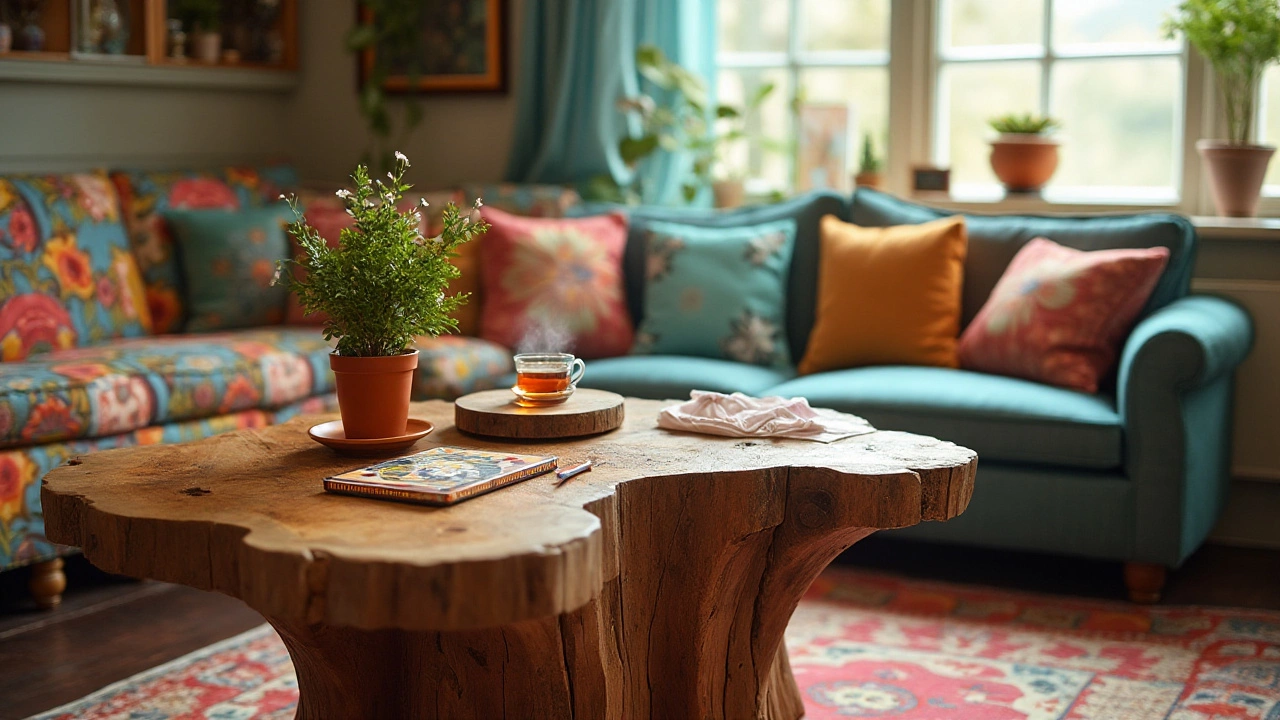
Design Styles and Their Impact on Size Choice
When selecting a coffee table, the design style can significantly influence the size that will harmonize best with your sofa and the room's overall aesthetic. There are numerous styles, each with unique characteristics that should guide your choices. For instance, if you favor a minimalist decor, a sleek, low-profile table may fit best, avoiding any overwhelming presence in the room. Such a choice complements the clean lines typically associated with minimalism while offering just enough surface area to be functional without clutter.
In contrast, for those drawn to a rustic or farmhouse style, a more substantial piece might serve better. These often involve larger, more robust tables that provide a lived-in, welcoming feel. A table in this style can serve as a centerpiece, structurally complementing the rugged, cozy aesthetics of a farmhouse setup. Its size can be generous, given the style’s propensity for creating a warm, inviting atmosphere. Yet, it's crucial to ensure it does not dominate the room space or interfere with movement.
Urban and industrial styles have seen a rise in popularity, marked by tables that often feature metal or mixed materials. Here, the emphasis might be on both form and function, utilizing metal framework and reclaimed wood to create a striking balance between sophisticated and edgy. A moderately sized table, neither too imposing nor too delicate, often works as an ideal fit, blending seamlessly with an industrial theme's essence without overbearing the airy, spacious vibe that might feature exposed elements.
In eclectic or bohemian settings, the choice can be much more flexible, relying heavily on personal taste and an eye for what fits 'just right.' This style welcomes variety in both material and size, encouraging individuals to mix pieces from different design schools. Here, the coffee table size depends largely on the space it inhabits and how various elements — color, texture, and pattern — come together to tell a cohesive story.
From a statistical perspective, recent surveys by interior design experts suggest that about 45% of households choose coffee tables based on their stylistic alignment with the room, rather than functionality. This reveals a cultural shift towards aesthetics being a priority in home décor.
According to Jane Lockhart, an acclaimed interior designer, "Choosing a coffee table often boils down to personal expression. People want their homes to reflect their unique style traits and personal taste, which is why the size can sometimes be more about appearance than functionality."These insights help us understand how personal taste and style preference significantly affect decision-making when it comes to sizing a coffee table appropriately in the grand tapestry of room decor.
